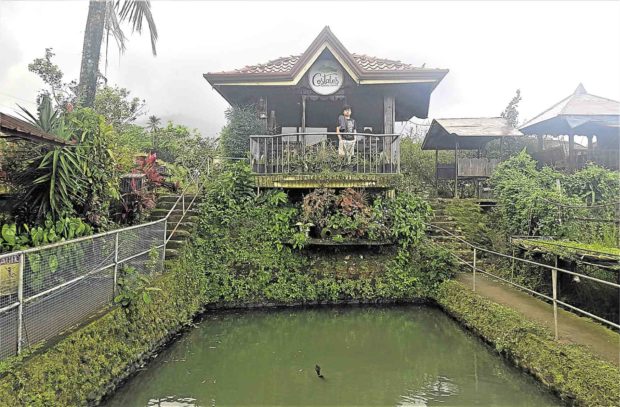Over the past three decades, more than 100,000 hectares of agricultural land—roughly the combined size of Metro Manila and Cebu City—were approved for conversion to non-agricultural purposes since the Comprehensive Agrarian Reform Law (CARL) took effect.
The rate at which agricultural lands are being converted has alarmed many quarters in the agriculture sector, as the shrinking size of arable and productive farm land is deemed a threat to the country’s food security. Add to that concerns of an aging farmer population, as the younger generations no longer see farming as a viable livelihood due to the huge production and post-harvest costs. Those who own land have opted to sell their property instead.
There is, however, a glimmer of hope following the passage of Republic Act No. 10816 or the Farm Tourism Development Act of 2016, which aims to optimize income from family-owned farms by infusing tourism-related activities.
Authored by Sen. Cynthia Villar, the law defines farm tourism as the practice of attracting visitors to farm areas or fishery-based operations for production, recreation or education purposes. Regarded as the law with the fastest time frame of enactment, it also provides fiscal incentives to persons or enterprises venturing into this promising sector in tourism.
“The most important effect of promoting farm tourism is the economic benefit it will bring to the farmer and to the immediate community. The rural lifestyle and cultural traditions are appreciated by guests, and the environment is sustained,” said former Tourism Secretary Mina Gabor, who pioneered the said practice in the country.
Gabor had noted that farm tourism is a sunshine industry which can be cultivated because of the economy’s agricultural nature.
In 2010, she established the International School for Sustainable Tourism (ISST) with a campus at the Subic Bay Freeport to lay the groundwork for farm tourism—which was still at its infancy at that time. The academy, which offered DOT and UN World Tourism Organization-recognized special diploma courses, has been conducting annual national farm tourism congresses in key cities across the country.
Last year, it opened its new training center at the 52-ha integrated farm of the International Institute for Rural Reconstruction (IIRR) in Silang, Cavite. It offers learning modules on community-based sustainable tourism, homestay program, ecotourism planning and management, faith tourism, and ecoguiding, among others.
Gabor had said the Farm Tourism Act had helped put certain properties, which have been promoting agriculture and tourism, on the mainstream.
According to the Hotel Sales and Marketing Association (HSMA), farm sites boosted the Philippines’ tourism potential as it is now a top agri-tourism destination with foreign visitor arrivals growing by 10.24 percent. Among the most popular sites are the organic, nature-themed, and wellness resort-type farms which are luring Western tourists.
One of these sites is Costales Nature Farms, nestled at the foothills of Mt. Banahaw in Majayjay, Laguna. Established in 2005, it is regarded as the country’s premier agri-tourism destination and is a major single producer of organic high value vegetables and herbs for food outlets, as well as organic chicken, eggs and pork for leading groceries.
An accredited private service provider for the Department of Agriculture, Department of Agrarian Reform and the Department of Tourism, Costales Nature Farms conducts workshops on organic farming, farm tourism, effective microorganism technology and organic hog raising. It also has short do-it-yourself activities, day and overnight tour packages for people who want to experience agrarian living as a unique family vacation or corporate team-building exercise.
Another noteworthy site is Nurture Wellness Village which started in 2002 as a 1,800-sqm spa in Tagaytay City. Over the years, it has grown into an 8,000-sqm garden resort with a restaurant serving locally-grown food, function room for meetings and special events, accommodation with tribal motifs, swimming pools and spas. It offers holistic, medically-supervised programs with therapeutic massages as its core service.
Less than a kilometer away is Nurture Farmacy, a 7,000-sq km farm where organic produce and medicinal plants are grown, and is visited by some 1,000 guests monthly. Trainings on organic farming and livelihood are held occasionally for nearby communities to help empower locals.
According to owner Cathy Collantes-Turvill, Nurture Village embraces environmental protection as a philosophy, and is a member of Zero Carbon Resorts, a group which aims to reduce carbon footprints through green practices. Despite the tempting value of real estate, the farm will remain a sanctuary in the area amid the rapid gentrification of Tagaytay, she added.
As part of its expansion, Nurture Farmacy acquired a 2,000-sqm plot in Amadeo town and embarked on the manufacture of powdered kale juices, ready-made salads, and other organic produce for the local market.
With farm tourism becoming a trend even among millennials and professionals, the Philippines can look forward to a more balanced use of land whose value will continue to appreciate over time, even sans the conversion.
